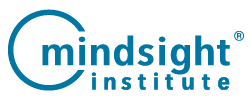Presence, Integration, and the Cultivation of Well-Being in Relationships and Family Systems
- 10.5 hrs
- 7 Lesson(s)
- All Levels
- Overview
- Topics
- Learning Objectives
- CE Credit
- FAQ
- Discover how to make sense of our relationships and experiences and how they shape the way we interact with others
- Learn to cultivate presence to support important changes in neural structure that lead to integration, balance, happiness, and more rewarding relationships
- Enjoy a compilation of 7 of Dan’s most popular lectures initially delivered live in Santa Monica, CA, eligible for 10.5 CEUs
- Receive a downloadable handout with each lecture
Lecture 1: Mindful Awareness and Neuroplasticity
In the first lecture, we’ll build a foundational understanding of the brain’s incredible ability to change through focused attention.
Lecture 2: Presence, Attunement, and Resonance in our Relationships
Dr. Siegel explains how mindfulness and a state of presence can help us build mindsight.
Lecture 3: Trauma and Attachment
Explore how stressful environments can affect neural development, the ability to maintain healthy relationships, and internal beliefs and feelings about the self.
Lecture 4: Connecting to our Parents Across the Lifespan
Dr. Siegel explains how self-reflection and presence can help us build stronger, more rewarding relationships with our parents at any age.
Lecture 5: Thinking, Deciding, and Behaving
Dr. Siegel illustrates how a deep understanding of feelings, sensations, and intuition empowers us to shift energy flow and support more empathic, connected, and rewarding relationships.
Lecture 6: The Adolescent Mind and the Journey into Adulthood
Dive deeply into the new science of adolescence, exploring the important and challenging ways that the brain changes between the ages of 12 and 24.
Lecture 7: Cultural Evolution and Mindsight
In the final lecture, Dr. Siegel invites us to reflect on how the self is important, larger than the individual, and connected in so many ways to others and our larger world.
Online Q&A: Previously recorded 90-minute Q&A session where Dr. Siegel answers questions from previous students of the course.
By the end of this course you will be able to
1. Outline the history and major findings of mindfulness research
2. Explain how integration –honoring differences and promoting linkages – relates to mindfulness, the brain, and health
3. Define mindsight and highlight its distinction from physical sight
4. Examine how presence, attunement, and resonance are a foundation for creating trust in relationships
5. Learn to cultivate mindfulness through attention and presence
6. Identify the 4 S’s of creating secure attachment
7. Differentiate the four patterns of attachment and the strategy of adaptation related to each
8. Explore how past experiences and relationships shape our nervous system and mind
9. Illustrate the difference between resolved and unresolved trauma
10. Identify several effective strategies in the healing of trauma
11. Explain how making sense of one’s experiences influences relationships and the ability to be present and embrace uncertainty
12. Highlight how implicit and explicit memory relate to actively authoring one’s own life story
13. Understand key aspects of thinking, deciding, and behaving
14. Apply Dr. Siegel’s Hand Model of the Brain to life and work
15. Outline the purpose of adolescence and characteristics of this period
16. Debunk common myths about adolescence and learn methods for empowering individuals across the lifespan
17. Describe the process, purpose, and effects of neural pruning and myelination that occurs in adolescence
18. Utilize focused attention to enhance one’s internal compass and access the wisdom of the body
19. Identify how integration can be increased in relationships and family systems
20. Summarize how presence, attention, and mindsight relate to cultural evolution
Upon completion of course, please mark your status as “complete” and you will obtain immediate access to your exam in your course area. Once you complete and submit your exam, our team will process same. Upon passing the exam with an 80% or better, a digital CE Credit Certificate will be emailed to you once it is available. Please note that this process could take up to 2 weeks. If you have any special circumstances, please reach out to the Mindsight Team at info@mindsightinstitute.com and we will do our best to accommodate.
Further, if you simply require a Certificate of Completion, or if you have any questions regarding this process, please email the Mindsight Team at info@mindsightinstitute.com.
Disclosure: The speakers, and planning committee members listed below have disclosed that they have no relevant financial relationships with commercial interests
Daniel Siegel, MD & Marion Solomon, PhD
How long will I have access to the course?
How do I gain access to my course materials and get started?
If you have not previously registered for a Mindsight course, you will receive an email (upon enrollment) notifying you of your login credentials, which you’ll use to enter your profile and view your online library.
A “Welcome” letter will also be delivered to you: It contains all of the course-access instructions and logistical details that you’ll need moving forward, and you’re always encouraged to reach out to us at info@mindsightinstitute.com with any further questions.
Are the course materials downloadable?
Our video content cannot be downloaded, but it can be streamed and viewed on any computer, tablet, or mobile device at your convenience. All notes, handouts, and study materials associated with the course, however, are downloadable and printable.
I don’t have a background in biology or science. Will I still be able to understand the content of this course and benefit from it?
Yes! Dr. Siegel has a unique ability to make complex scientific concepts accessible, and our courses are designed to resonate with wide audiences. This workshop has no prerequisites, and a scientific background is not necessary to find value in its teachings: We’re confident that you’ll walk away with plenty of knowledge to apply in your personal and professional life.
Who can I contact for further information?
If you have any additional questions, please don’t hesitate to reach out to the Mindsight Team at info@mindsightinstitute.com. We’re always happy to help!



